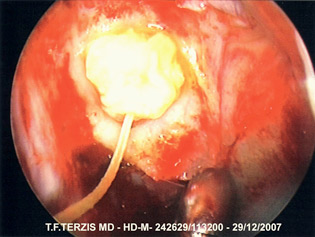Endoscopic Repair of Cerebrospinal Fluid Leak

The brain is protected from scratches and trauma by a special fluid, which is produced inside the cavities of the brain and is drained through the venous circulation. This fluid is named Cerebrospinal Fluid (CSF). If there is a disruption of the skull base, which is the bony wall sitting between the brain and the nasal cavity, and this is associated with a rupture of the protective membrane surrounding the brain, the dura, then CSF drains through the nose. This condition is named Cerebrospinal Fluid Leak (CSF Leak), and is considered particularly dangerous, due to the possibility of transmission of infection from the nose to the cranial cavity. Meningitis and encephalitis, which are severe inflammation of the dura and the brain respectively, are severe and potentially lethal conditions.
Surgical closure of the CSF Leak has been traditionally done by the Neurosurgeons, through external incisions, with the use of various grafts or artificial implants.
Endoscopic Surgery allows the repair of skull base defects through the nose, with minimal discomfort for the patient. The surgeon uses the endoscopes and chooses the method of closure which fits best the size of the defect (see image). A variety of grafts may be used, such as fat, septal mucosa, or fascia lata from the thigh. Local flaps, usually from the septum or the turbinates, or various artificial materials may also be used.
Hospitalization rarely exceeds two days and the patient is able to return to normal activity soon.
καθημερινές δραστηριότητές του.